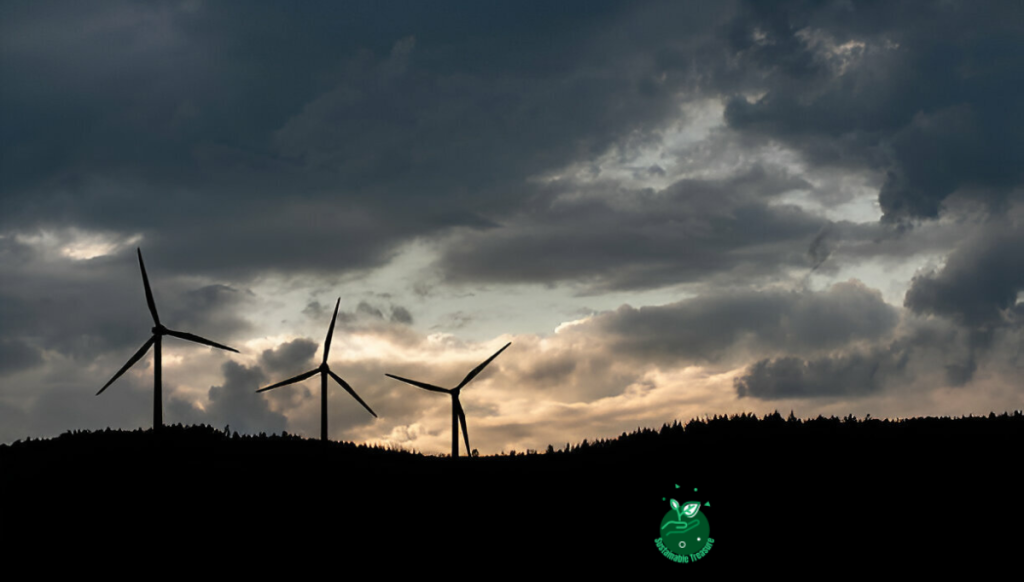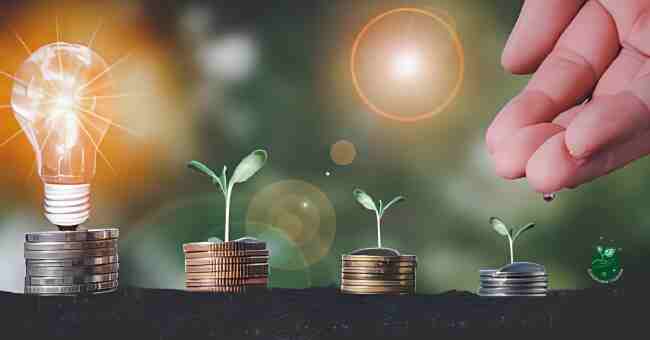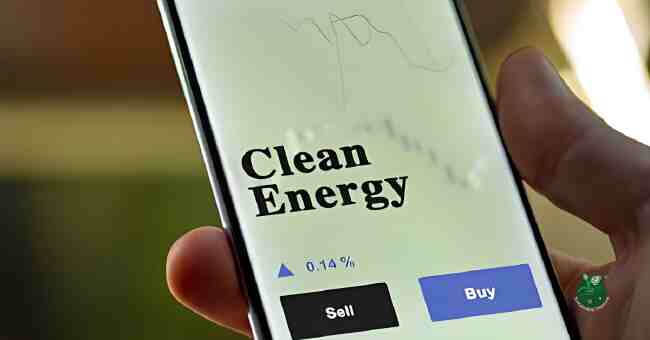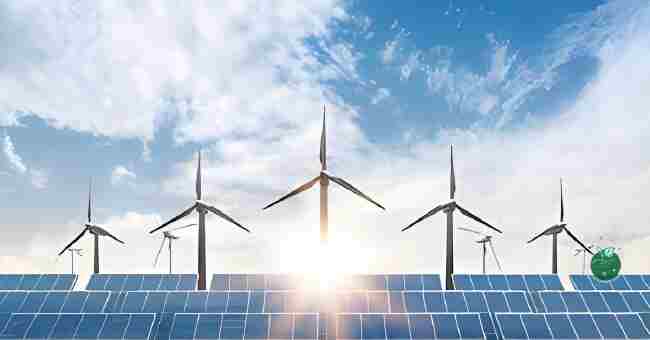Table of Contents
Do you wish to know the impact of digital transformation on clean tech? Yes, in these rapid digitalization sweeping across industries catalyzes profound opportunities in clean technology development and sustainability investment.
From harnessing big data and AI for optimizing renewable operations to blockchain platforms democratizing green finance, disruptive innovations underpin an unfolding energy revolution.
I vividly recall my childhood, when discussions of climate change still seemed theoretical and far-removed. Now, as a parent, the urgency to decarbonize our planet tugs at me daily.
Digitalization empowers us to accelerate this vital transition through intelligent systems, collaborative technologies, and data-driven insights.
Let me walk you through the transformative potential unlocked at the intersection of clean tech and cutting-edge digital capabilities.
How Big Data Unlocks Clean Energy Potential

In our data-driven world, companies leveraging big data analytics gain a competitive edge in the clean tech market.
By harnessing smart meters and IoT sensors, utilities can optimize energy distribution and identify areas for renewable integration.
Predictive analytics reveal consumption patterns, allowing providers to forecast demand accurately and tailor their energy mix. Cloud-based data platforms streamline access to this invaluable information, fueling strategic investment decisions.
Top Cloud Providers for Clean Tech Analytics
| Provider | Key Analytics Offerings |
|---|---|
| Microsoft Azure | Azure Synapse Analytics, Azure Data Lake |
| Amazon Web Services | Amazon Athena, Amazon QuickSight |
| Google Cloud Platform | BigQuery, Cloud Dataproc |
Blockchain Bolsters Clean Energy Financing
The distributed ledger technology underlying cryptocurrencies is revolutionizing clean tech investing.
Blockchain provides a secure, transparent platform for peer-to-peer energy trading and crowdsourced financing of renewable projects.
Startups like EnergiMine and SolarCoin issue digital tokens rewarding producers of clean electricity. This incentivizes sustainable behavior while opening new investment avenues.
Blockchain also increases transparency into an organization’s carbon footprint, helping investors align with environmental values.
Companies can tokenize carbon credits on decentralized ledgers like Veridium to finance emissions reduction reliably.
AI Optimizes Renewable Operations
Artificial intelligence is a game-changer for clean tech operations and investment strategy.
AI-powered forecasting predicts solar and wind energy output with incredible accuracy, allowing utilities to manage intermittent supplies effectively.
Machine learning models analyze reams of meteorological data, sensor telemetry, and satellite imagery to fine-tune production schedules.
IBM‘s AI platform optimizes renewable plant operations while minimizing downtime through predictive maintenance.
Intelligent robotic systems automate inspections and repairs, reducing workforce risks.
These cutting-edge AI capabilities attract investors by optimizing renewable asset management.
IoT Enhances Energy Efficiency
The Internet of Things is pivotal for realizing a sustainable energy future.
Smart IoT devices enable two-way communication between utilities and consumers, unlocking real-time demand response capabilities.
Smart thermostats and appliances can automatically adjust usage to ease strain on the grid during peak hours.
Vehicle-to-grid technology allows electric cars to discharge stored energy when needed.
Microsoft and Cisco provide comprehensive IoT platforms enabling energy providers to scale intelligent device networks.
| IoT Use Case | Description |
|---|---|
| Smart Metering | Real-time usage tracking for accurate billing |
| Grid Monitoring | Sensor networks detect faults, enable predictive maintenance |
| Smart Home Integration | Connected appliances help manage residential energy demand |
Virtual Power Plants Maximize Asset Utilization
Digital technology converges in the virtual power plant (VPP) model, a distributed network of energy resources coordinated through centralized software.
VPPs combine clean energy installations like rooftop solar, neighborhood batteries, and electric vehicles into a single, cloud-controlled system.
Electrify and Next Kraftwerke use AI algorithms to optimize when each distributed resource is dispatched or reserved.
Real-time weather and market data ensure the ideal energy mix for minimizing costs and emissions.
By aggregating distributed resources into an integrated platform, VPPs capture value from clean tech assets that may be too small to participate in traditional electricity markets. This model attracts investment in distributed renewables and storage.
Digital Twins Mitigate Project Risks
Constructing renewable energy plants is a capital-intensive endeavor prone to cost overruns from unforeseen issues.
Digital twin technology pioneered by NVIDIA and Bentley Systems creates a virtual replica to simulate the entire lifecycle.
Developers test countless operational scenarios virtually before breaking ground. Digital twins validate designs, optimize construction schedules, and model maintenance strategies for maximum uptime.
This exhaustive virtual prototyping catches problems early, giving investors confidence in on-time, on-budget project delivery.
5G Powers Smart Grid Transformation
Robust connectivity underpins the clean tech revolution. Fifth-generation wireless networks provide the bandwidth, low latency, and scalability to unleash intelligent energy distribution.
Private 5G from Nokia and Ericsson establish dedicated coverage across smart grid infrastructure like:
- Substations
- Renewable farms
- Energy storage facilities
- EV charging stations
Fleets of autonomous drones and robots inspecting assets require seamless 5G connectivity. Real-time sensor telemetry ensures grid resilience even with distributed renewables. As the backbone for IoT, AI, and automation, 5G attracts investors by enabling clean energy’s full potential.
Sustainable Finance Transformation
Financial technology is evolving in lockstep with the clean tech industry. LO3 Energy tokenizes renewable energy credits into blockchain-traded assets. Greenomy crowdsources funding for climate projects worldwide through user-friendly platforms.
Carbon Cure demonstrated blockchain’s viability for crediting carbon removals. Cool Effect accepts cryptocurrency payments for verified emissions offsets. As digital tools proliferate, investing in climate solutions transcends traditional equities and bonds.
Immersive Tech Elevates Clean Energy Education
Promoting clean tech adoption requires raising public awareness. Immersive technologies like virtual reality (VR), augmented reality (AR), and 3D visualization engage learners of all ages with renewable energy concepts.
Odyssey Earth offers VR journeys to explore the impacts of climate change and sustainable solutions. Interactive AR apps from SoRHE overlay energy data visualizations onto physical products and infrastructure. 3D modeling tools like Unmult enable architects and engineers to collaborate remotely on eco-friendly building designs.
As immersive tech brings clean energy vividly to life, it kindles grassroots interest that spurs further public and private investment into sustainable solutions.
Online Training Upskills Clean Tech Workforce
The transition to a green economy requires a skilled labor force. Massive open online courses (MOOCs) make clean tech education accessible to professionals globally. Coursera, edX, and Udacity offer courses spanning solar, wind, energy storage, smart grid technologies, and more.
Online learning platforms also help companies cross-train existing employees for emerging clean tech roles.
On-demand video tutorials keep teams up-to-date on rapidly evolving digital tools and sustainable practices.
As the industry’s workforce needs evolve, scalable e-learning attracts investment.
Cleantech Innovation Clusters Thrive Digitally
Regional hubs catalyzing clean tech research, patents, and venture funding are enhanced by digital infrastructure.
High-performance computing at national labs and universities accelerates computational fluid dynamics, climate modeling, and other R&D disciplines.
Video conferencing and shared cloud workspaces enable geographically dispersed teams to ideate and collaborate seamlessly.
Online innovation contests, hackathons, and pitch competitions connect disruptive cleantech startups with investors and corporate partners regardless of location.
| Innovation Hub | Key Cluster Members |
|---|---|
| Boston | MIT, Commonwealth Fusion Systems, Raptor Maps |
| Silicon Valley | Stanford, Enphase Energy, ChargePoint |
| Austin | University of Texas, SEC Newenergy, Hyliion |
In a globalized, digital economy, cleantech ecosystems thrive by tapping worldwide talent pools, forming cross-border partnerships, and disseminating intellectual property digitally.
FAQs

What Are the Key Digital Trends Impacting Clean Tech Investment?
Digitalization is profoundly reshaping the clean technology landscape and spurring new investment opportunities.
Data-driven insights from IoT sensors, AI analytics, and cloud platforms optimize renewable asset performance and grid management.
Distributed ledgers like blockchain enable peer-to-peer energy trading, crowdsourced financing for sustainable projects, and transparent carbon credit marketplaces.
Immersive technologies like VR/AR raise public awareness of climate solutions. Regional innovation clusters leveraging high-speed connectivity, remote collaboration tools, and access to global talent pools accelerate cleantech R&D.
Converging digital capabilities manifest in the virtual power plant model, maximizing utilization of distributed solar, batteries, and EVs through intelligent software coordination.
How Does Big Data Drive Sustainable Energy Adoption?
Utilities capture a deluge of real-time data from smart meters, grid sensors, weather satellites and more.
Harnessing advanced analytics and machine learning, this big data reveals critical insights for accelerating renewable energy integration at scale.
Predictive models forecast intermittent solar and wind generation with precision, allowing operators to balance clean supplies optimally.
Granular consumption data identifies opportunities to curb energy waste through efficiency programs and demand response initiatives engaging smart homes.
With visibility into grid constraints, utilities strategically site utility-scale renewable farms, storage facilities, and EV charging deployments.
Data-driven network planning maximizes clean energy utilization while maintaining resilience.
What Role Does Blockchain Play in Clean Tech Financing?
The decentralized, transparent nature of blockchain technology catalyzes new sustainable investment vehicles beyond traditional financing pathways.
Digital tokens incentivize small-scale producers and prosumers to feed surplus clean electricity onto the grid. Crowdfunding platforms built on blockchain enable broad participation in climate solution funding.
Blockchain provides an auditable ledger to verify carbon emissions reductions and removals, fostering credible carbon credit trading markets. Clean tech companies tokenize renewable energy credits as blockchain-traded assets.
Smart contracts automate shepherding of climate finance, reducing transaction overheads. This democratization of capital flow propels innovative business models accelerating the global energy transition.
How Do Digital Twins De-Risk Renewable Project Deployment?

Developing large-scale renewable energy installations is a risky, capital-intensive endeavor prone to cost overruns from unexpected construction challenges.
Digital twin technology creates a precise virtual replica to model the entire plant lifecycle before breaking ground. With this virtual prototype, developers iterate through myriad operational scenarios to validate designs, troubleshoot issues, and optimize build sequences.
Highly detailed physics-based simulations visualize wind loads, solar shading patterns, equipment thermal profiles and more to fine-tune system engineering.
Digital twins also model predictive maintenance strategies to maximize renewable plant productivity and uptime post-deployment.
Such comprehensive virtual prototyping mitigates financial risks, boosting investor confidence.
Conclusion
As we’ve explored, unprecedented digital innovations reshape how societies generate, distribute and consume energy more sustainably.
From intelligent analytics maximizing renewable utilization to blockchain financing renewable projects, to immersive tech educating stakeholders, disruptive technologies turbocharge our climate solutions.
Recognize these key digital trends: big data-driven optimization, blockchain-enabled financing, AI/IoT for smart grids, and immersive learning.
Proactively investing to leverage these capabilities positions organizations at the vanguard of the clean tech revolution.
The future belongs to those harnessing digitalization to build a greener, more sustainable world.
Image: Credit Istock



